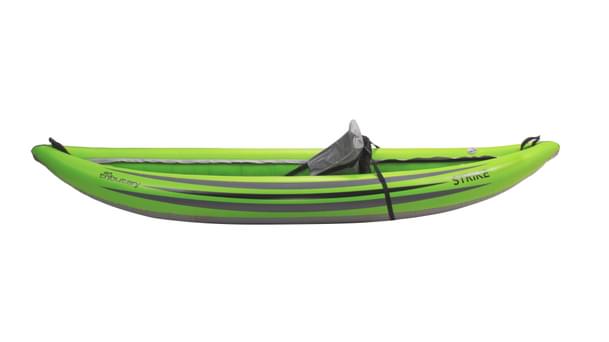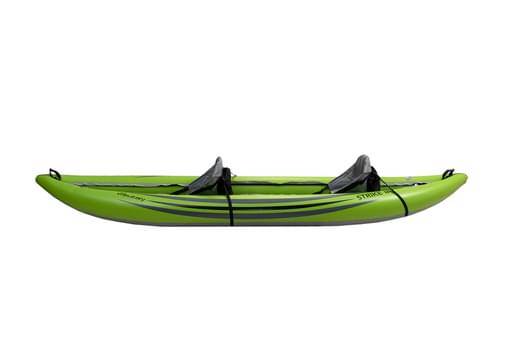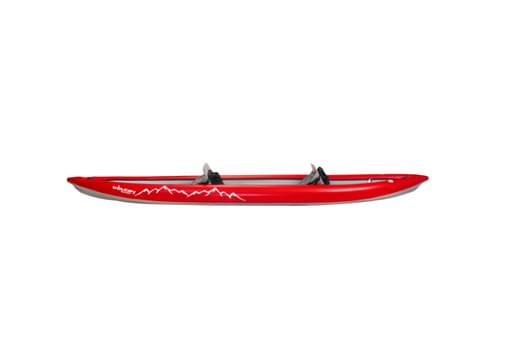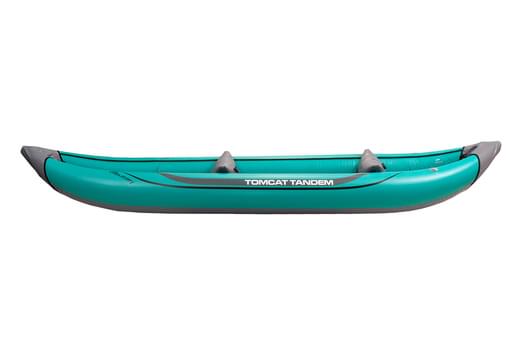- Home
- Gear & Reviews
- Temiskawa
Temiskawa
This Product Has Been Discontinued
Temiskawa Description
The Temiskawa is a kayak brought to you by Formula. Read Temiskawa reviews or submit your own review to share with the paddling community. Check out a few other kayak recommendations below or explore all kayaks to find the perfect one for you!
Formula
Temiskawa Reviews
Read reviews for the Temiskawa by Formula as submitted by your fellow paddlers. All of the reviews are created and written by paddlers like you, so be sure to submit your own review and be part of the community!
The Temiskawa’s overall fit…
At 19” 8” in length, with a 25½” beam and weighing 84 lbs., the Temiskawa is smaller, lighter, and more easily handled out of the water than other composite tandems. The relatively narrow beam and rounded vee hull profile allows the Temiskawa to cruise at speeds comparable to longer tandems, in spite is its slightly shorter waterline. All three bulkheads are fiberglass, making them stronger than either extruded plastic or mini-cell foam secured with marine sealant. Any one who has knocked loose a bulkhead in the middle of an extended trip will appreciate this feature. Bulkheads have a domed profile, to permit flexing and/or to avoid cracking in severe side impacts. The utility of this design seems somewhat questionable, and this shape complicates installation of foot operated bilge pumps. The front bulkhead could also be located further aft to increase storage and lessen flooded cockpit volume in the event of capsize.
Deck fittings are recessed, while deck bungee cords and perimeter lines are nicely layed out. The Temiskawa is shallow with a relatively flat deck profile. Compared to most other tandems, its 13¼” depth is 1 to 2” lower. This makes for a comfortable cockpit comparable to a large single, and which can be further improved with owner-installed foam padding. Comfortable seats are of a molded composite construction. The medium-sized keyhole cockpit requires a feet first entry. Thigh braces are well placed. A paddle shaft recess molded into the hull behind each cockpit facilitates a paddle assisted cockpit entry. Seat backbands, by Immersion Research, provide outstanding support and comfort. The Temiskawa has adjustable nylon paddle float rescue straps that are far more secure than the bungee cords used by most manufacturers. Their location between the cockpits, however, prevents installation of a compass for navigation use by the stern paddler. For this reason, I recommend specifying the Temiskawa with bow cockpit rudder control if it will never be paddled as a single. A Ritchie F50 compass can easily be installed in the front storage compartment cover for use by the bow paddler. An additional benefit of bow cockpit rudder control is that the bow paddler has a better view of both destinations and obstacles than does the stern paddler.
The Temiskawa is equipped with an excellent rudder sourced from Seaward. Standard foot braces/ controls are Keepers brand. For a $100 premium, Formula will substitute Seaward smartRUDDER controls the best rudder control system on the market and worth the extra cost. Pivoting smartRUDDER controls allow simultaneous steering and bracing, and are more robust than similar controls offered by other manufacturers.
Tethered hatch covers are fiberglass with integral rubber seals. They are dry in most conditions, providing that all sealing surfaces are kept clean and that the nylon straps securing them are kept tight. After a couple of hours of taking waves over the bow on a recent trip, a small amount of water had found its way into the bow storage compartment. VCP or Kajak Sport rubber hatches would be an improvement. Storage capacity is adequate for multi-day trips by minimalists using lightweight backpacking-type gear. A medium-sized dry bag will fit in front of the footpegs in the cockpit without rudder controls. Investing in a Sealine rear deck bag for carrying sleeping pads is advisable.
The Temiskawa, with its rounded vee hull, slight rocker, and shorter waterline length is not a particularly strong tracker without the rudder deployed. With the rudder down, it is very predictable and easily kept on course. The rudder tends to ride up in waves, a common problem with rudder-equipped boats. Adding a rudder line cleat addressed this problem.
With the rudder up, the Temiskawa maneuvers well for a tandem. A pair of coordinated paddlers can easily edge this boat. Initial stability is moderate for a tandem, but will seem high to a paddler accustomed to singles. Final stability feels predictable. The Temiskawa comes up to speed quickly and will cruise at six knots in a calm sea. It is a seaworthy boat, handling four foot wind driven Lake Superior waves in a confidence-inspiring manner. With its relatively low deck, it was also only marginally affected by high winds regularly encountered in a recent trip on Yellowstone Lake.
The Temiskawa is a well-designed, quality built, sporty, easy to transport, fun to paddle, smaller tandem, with many of the performance characteristics of a larger boat. It should suit paddlers of a broad spectrum of experience and skill levels, and I therefore, highly recommend this boat.
